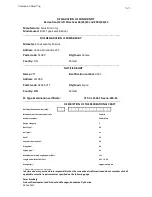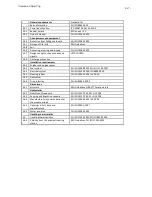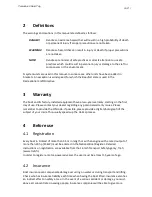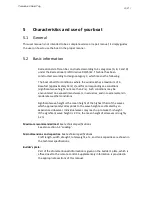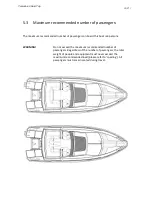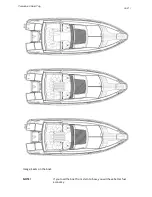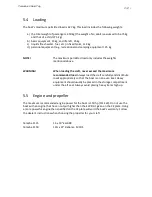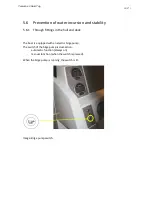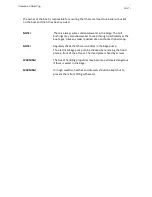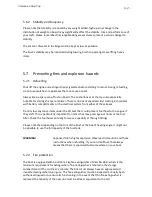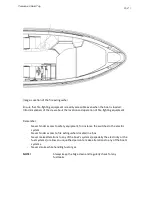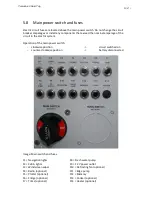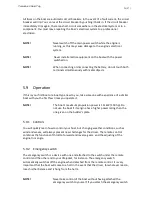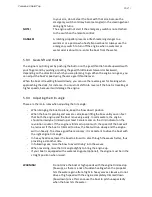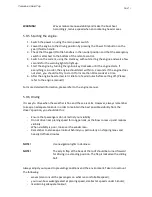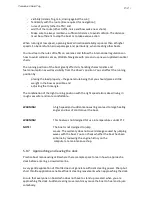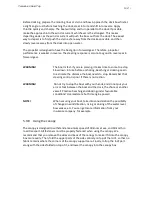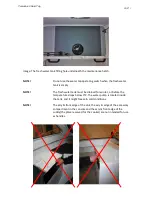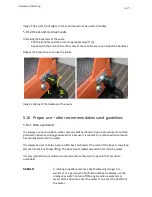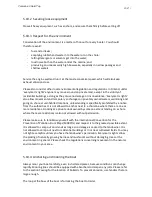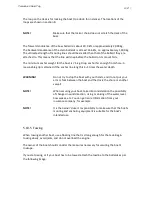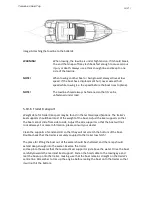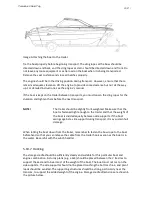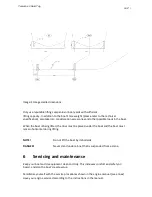
Yamarin 63 Hard Top
21 (47)
5.6.2
Stability and buoyancy
Please note that stability is reduced by any weight added high up. Any change in the
distribution of weight on board may significantly affect the stability, trim and performance of
your craft. Please remember that large breaking waves always present a serious danger to
stability.
The amount of water in the bilge must be kept as low as possible.
The boat’s stability may be impaired during towing, or when passengers are lifting heavy
items.
5.7
Preventing fires and explosion hazards
5.7.1
Refuelling
Shut off the engine and extinguish any cigarettes before starting to refuel. During refuelling,
do not use switches or appliances that can cause a spark.
Always keep a spare can of fuel on board. The anchor boxes at the stern are especially
suitable for storing the spare canister. There is no risk of vaporised fuel coming into contact
with battery compartments or the electrical system from either of these boxes.
Do not stow any loose items under the aft seat that could prevent fuel flow to the engine if
they shift. This is particularly important for items that may press against hoses or the fuel
filter. Check the fuel hoses annually for wear, especially at through fittings.
Please note that depending on the trim of the boat or the boat’s heeling angle, it might not
be possible to use the full capacity of the fuel tank.
WARNING!
Vaporised fuel is highly explosive. Observe strict caution and these
instructions when refuelling. If you can smell fuel, that always
means that there is vaporised fuel somewhere on your boat.
5.7.2
Fire protection
The boat is equipped with a portable 2 kg fire extinguisher of class 8A 68 B, which is the
minimum requirement for extinguishers. The extinguisher is located in the storage
compartment of the co-driver’s console. The boat must always have an approved and
inspected extinguisher during use. The fire extinguisher must be inspected annually by an
authorised inspector to ensure its functioning. In the event that the fire extinguisher is
replaced, the capacity of the new one must be at least equivalent to the old.

